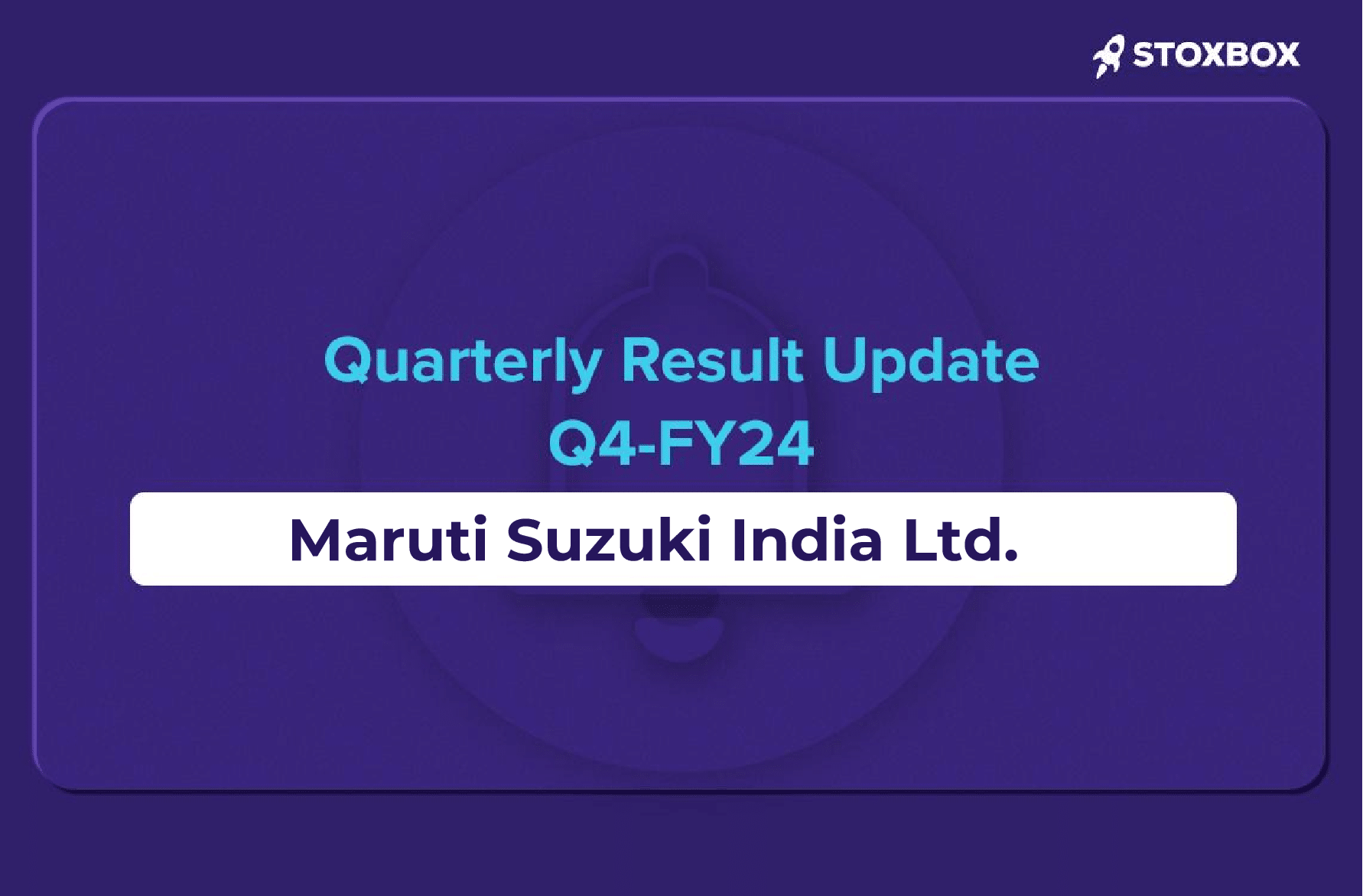Table of Contents
Sector Outlook: Positive
Shift in sales mix enabling profitability
In FY24, Maruti Suzuki reported strong financial results with significant increases in revenue, EBITDA, and profit after tax (PAT), growing by 20%, 51%, and 64% year-over-year, respectively. Despite challenges like lower CNG vehicle sales due to supply issues, the company achieved a revenue of around Rs. 38,235 crores. Although the profit margin of 12.3% was slightly below expectations, improvements were noted from cost management and reduced sales promotions. The company also benefited from high other income, which helped exceed profit forecasts. Maruti Suzuki declared a higher dividend of Rs. 125 per share and saw a massive rise in free cash flow, thanks largely to better operational cash flow and despite increased spending on expansions. The company sold over 2 million vehicles this fiscal year, boosted by strong SUV and hybrid sales, effective marketing, and increased exports. Looking ahead, Maruti Suzuki expects growth in CNG vehicles and exports in FY25.
Key Concall Highlights
Domestic
- Maruti Suzuki has a large backlog of 200,000 orders, with 111,000 of these for CNG models, mostly the Ertiga CNG.
- The company sold 450,000 CNG units in the fiscal year 2024, with strong sales of Ertiga CNG, and aims to increase this to 600,000 units in 2025.
- Maruti plans to expand its SUV offerings as it targets a 50% market share in this segment.
- There’s been no significant increase in first-time buyers, who usually buy small cars, making it difficult for hatchback sales in 2025 and 2026.
- Sales growth in rural areas was higher than in urban areas in 2024.
- The company is focused on hybrid technology, which is environmentally friendly. There are talks with the government about lowering GST rates on these models, and Maruti plans to release more hybrid cars.
- Maruti is prioritising the introduction of hybrid technology in larger vehicles because they have more room to accommodate the necessary equipment.
Margin
- In Q4FY24, the share of CNG dropped from 30% to 26% QoQ due to supply constraints, thereby impacting ASPs. However, with improved supply conditions, it is expected that there will be no constraints going forward. CNG models are now yielding better profitability.
- There were approximately 60 bps of small one-offs, which are not expected to recur in Q1FY25. Some were associated with RM cost, development cost, and CSR bump-up, among others.
Exports
- Maruti continues to maintain its position as the top PV exporter, outperforming peers for the last three years.
- Volumes are projected to surpass 300K units in FY25, with stability in the current situation, although volatility persists. Expansion into international markets is ongoing.
- Leveraging Toyota’s global network, negotiations occur on a model-to-model basis.
Capacity
- Construction at the Kharkhoda plant is progressing well. It is anticipated that 250K units capacity will be operational in FY25, with plans to gradually establish a total of four plants with a capacity of 1 million units over time.
- A new greenfield plant in Gujarat is in the process of land identification, with a capacity of about 1 million units and a total capex of Rs. 35,000 crores.
- An additional 100k units capacity per annum has been added at the Manesar plant, primarily addressing Ertiga CNG supply bottlenecks.
Key data points
- SUVs made up over 50% of the automotive industry’s sales, while hatchbacks dropped to 27% in FY24.
- The industry’s CNG vehicle sales rose from 10.4% in FY23 to 15% in FY24.
- Hybrid vehicles are gaining popularity, making up 2% of industry sales, equal to electric vehicle (EV) penetration.
- Maruti saw a decrease in first-time car buyers, down to 40-43% in FY24. Additional car buyers made up 38%, and those replacing their cars accounted for 20-22%.
- The share of Maruti’s environmentally friendly vehicles, like hybrids and CNG, increased from 37% in FY23 to 42% in FY24.
- The percentage of Maruti cars transported by railway increased to 21.5% in FY24 from 17.6% in FY23, aided by a new railway facility at their Gujarat plant.
Other key highlights
- Retail discount stood at Rs 18,000 per unit in Q4FY24.
- The company submitted three cars for Bharat NCAP testing and awaits results. Safety features in cars have been enhanced beyond compliance requirements, with almost all new models now equipped with six airbags as standard.
- Inventory levels are at approximately one month, with 136k units as of March 31, 2024. The company aims to maintain at least one month of stock at dealerships. Royalty expenses amounted to 3.5% in Q4FY24.
Valuation and Outlook
Maruti Suzuki Ltd. (MSIL) is strategically adapting to market changes by focusing on fuel-efficient and SUV models, with plans to enter the electric vehicle (EV) market in FY25 and launch six EV models by FY31. The company aims to expand its production capacity to 4 million units by 2030-31 through new projects and facility expansions. MSIL is benefiting from lower steel prices, recent price increases, and favourable exchange rates, which should help maintain profit margins. They plan to spend Rs. 1,200-1,400 crores on marketing, aiming to connect with younger consumers across various platforms. MSIL is well-positioned to benefit from any tax changes on hybrid vehicles, enhancing its partnership with Toyota to introduce more hybrid models. The company expects hybrids to make up 25% of its sales by 2030. Despite the current market pricing in many positive aspects, the long-term outlook for MSIL remains strong, with potential growth boosts from lower interest rates, hybrid options in smaller cars, and possible tax reductions on hybrids.


